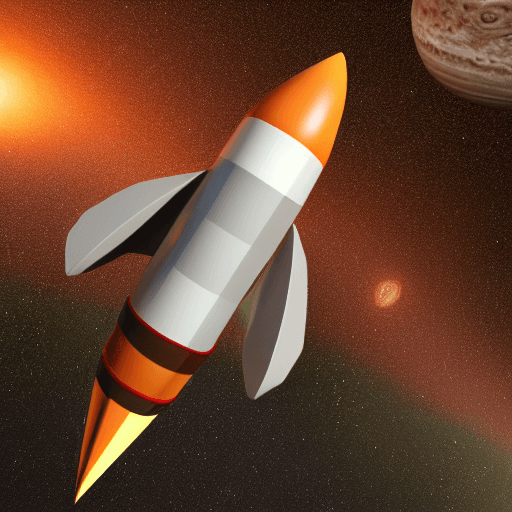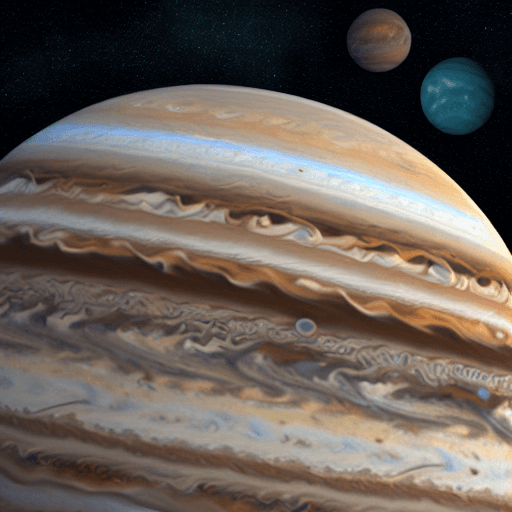Want to go to Jupiter?
How long is the trip?
How many miles away is Jupiter?
Do we have to stop at the gas station before we leave?
If you’re curious about how long would it take to get to Jupiter, we’re going to discuss how long it would take to get to this giant gas planet and the different methods of transportation that are available to us today…buckle your seatbelts.
We’ll also take a look at some of the challenges that we would face along the way.

It would take between 5 and 7 years to get to Jupiter using current technology.
Explain It To A Child
It would take about 6 years for a spacecraft to reach Jupiter if you left today. That may seem like a long time, but compared to other planets in our solar system, Jupiter is actually one of the closest.
This is because Jupiter is significantly further away from Earth than any other planet in our solar system, making it a much more challenging target for space exploration missions. However, recent advances in spacecraft propulsion could potentially shorten this journey time in the future.
Jupiter is an important planet for scientific study, as it provides insights into the early history of our solar system. It also has many fascinating features, including its large planetary-sized moons, and an intensely colorful atmosphere.
Jupiter was the first planet to be discovered by humans (as early as 1610) and remains one of the most intriguing objects in our solar system.
How long would it take to get to Jupiter?
If you were to hop in a spacecraft headed for Jupiter today, it would take you 6 years to reach the gas giant.
That may seem like a long time, but compared to other planets in our solar system, Jupiter is actually one of the closest.
What are the different ways of calculating how long it would take to get to Jupiter?
There are a few different ways of calculating how long it would take to get to Jupiter.
- One method is to use the average speed of a spacecraft. This number can be calculated by dividing the distance between Jupiter and Earth by the average speed of the spacecraft.
- Another way to calculate this is by using the number of days it would take for the spacecraft to travel from Earth to Jupiter. This number can then be converted into years by multiplying it by 365.24.
- Finally, one can also use the number of light-years that Jupiter is from Earth. To find this, one simply needs to divide the distance in light-years by the speed of light.
No matter which method is used, it is clear that it would take a significant amount of time to get to Jupiter.
How close could a human get to Jupiter?

No one knows for sure how close a human could get to Jupiter without being destroyed by the intense radiation and heat.
The closest anyone has come is about 600,000 miles, when the Pioneer 10 spacecraft made its closest approach to the planet in 1973.
Even at that distance, the spacecraft was bombarded by high levels of radiation that would have been deadly to any living thing onboard.
However, it’s possible that future missions could use shielding or other technologies to allow humans to get closer to Jupiter.
One day, we may even be able to land on one of its moons and explore this fascinating world up close.
What are the different methods how to get to Jupiter?
There are currently two methods used to visit Jupiter and its moons –
- Flyby Spacecraft
- Orbiter
A flyby is the quickest and simplest way to get to Jupiter, but it doesn’t allow for much close study of the planet.
NASA’s Juno mission is an example of a flyby spacecraft; it launched in 2011 and will arrive at Jupiter in 2016.
An orbiter takes longer to reach Jupiter, but once it arrives it can continue to study the planet and its moons for years.
The Galileo orbiter was launched in 1989 and studied Jupiter until 2003 when it was intentionally deorbited into the planet’s atmosphere. Currently, there is only one orbiter at Jupiter – NASA’s Juno mission, which arrived at the planet in 2016.
In the future, NASA plans to launch another orbiter called the Jupiter ICy moons Explorer (JUICE), which is scheduled to launch in 2022.
What are some of the challenges of getting to Jupiter?

One of the biggest challenges of getting to Jupiter is the sheer distance involved.
Jupiter is over five times as far from the Sun as Earth is, and it would take a huge amount of fuel and energy to propel a spacecraft that far.
Even if we could manage to get a spacecraft to Jupiter, the planet’s hostile environment would pose another set of challenges.
Jupiter has strong radiation belts, and its atmosphere is very dense and full of harmful chemicals.
As a result, any spacecraft that attempted to land on Jupiter would need to be extremely robust and well-protected.
All of these factors make Jupiter a difficult target for exploration, but the planet’s many mysteries continue to intrigue scientists and engineers alike.
Why is Jupiter an important planet for scientific study?
With its massive size, intense gravity, and hostile environment, Jupiter presents a number of challenges for would-be explorers.

One of the biggest challenges is simply getting there – because of Jupiter’s great distance from Earth, it requires a large amount of fuel to make the trip.
Even if a spacecraft had enough fuel to reach Jupiter, it would then need to contend with the planet’s intense radiation fields, which could damage or destroy sensitive equipment.
And finally, any spacecraft that made it to Jupiter would need to be able to withstand the planet’s crushing gravity and crushing atmospheric pressure.
Despite these challenges, Jupiter is an important planet for scientific study.
Its large size means that it contains a huge amount of information about the early history of our solar system, and its unique position near the edge of the solar system makes it a valuable laboratory for studying how planets form and evolve.
As our knowledge of Jupiter continues to grow, so too will our ability to overcome the challenges posed by this fascinating world.
Article Sources
Jacks of Science sources the most authoritative, trustworthy, and highly recognized institutions for our article research. Learn more about our Editorial Teams process and diligence in verifying the accuracy of every article we publish.
